Solar farms – professor Giovanni Francia built the first one in Sant’llario, Italy in 1968.
Since then, the world has gone on to build thousands more, allowing renewable energy to reach the farthest corners of our planet.
If you think about it, this should come as no surprise.
Solar PV module prices have dropped from $106.09/W to $0.38/W within 43 years, allowing this green technology to become accessible not only for industrial-grade implementation but for small-scale residential installations alike.
This article aims to explain exactly what solar farms are and how they work.
Furthermore, it’ll answer all the most frequently asked questions surrounding this breakthrough technology.
Grab a pen and paper and get ready to take some notes!
Table of Contents
What Is A Solar Farm?
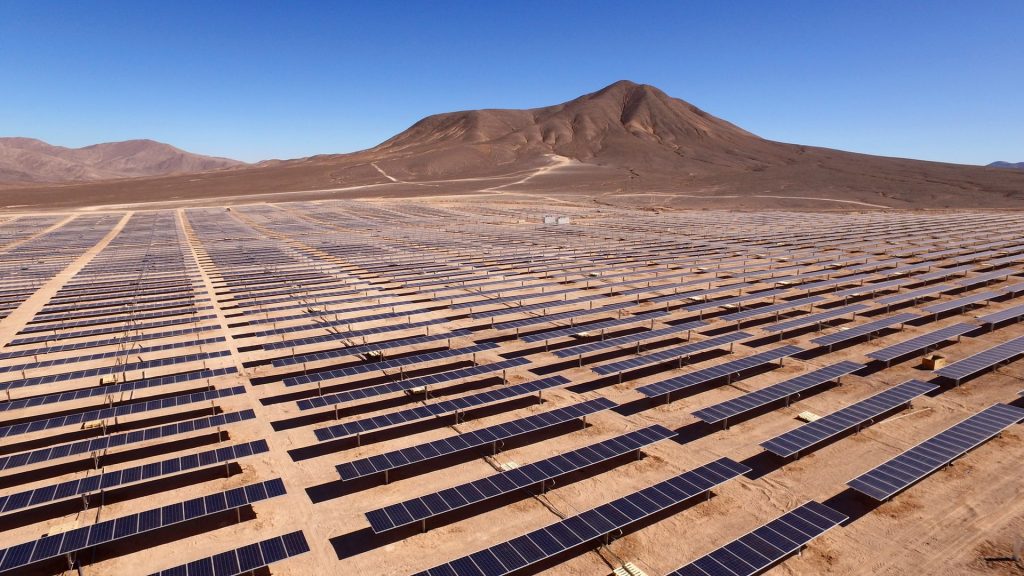
A solar farm, also known as a photovoltaic power station or solar plant is generally characterized by a large array (1MW to 2,245MW) of solar panels that supply electricity to the power grid.
The vast majority of existing large-scale solar power plants are owned and operated by independent power producers. However, utility-owned projects are increasing throughout the country.
Types Of Solar Farms
There are currently two types of solar farms – utility-scale solar farms, and community-driven solar farms. The main difference between the two is their customers. Utility-scale solar farms sell their electricity directly to various utility companies, while community solar farms sell their electricity directly to end consumers such as homeowners.
- Utility scale solar farms – are either privately owned or owned by the electric utility companies themselves. When privately owned, the power generated by the plant is sold to wholesale utility buyers through a power purchase agreement (PPA). Regardless of the setup, the utility is always the original customer of all utility-scale solar production. Once acquired, the utility will distribute said electricity to residential, commercial, and industrial customers who are connected to the grid.
- Community solar farms – is an idea that has trended in recent times, particulary in the United States and Australia. The concept itself is ingenious. Instead of selling the energy produced to utility companies, local residents and businesses are able to buy the energy through a subscription service. As of 2020, about a third of American states have enabled policies for residents to join in on community solar.
How Much Does It Cost To Set Up A Solar Farm?
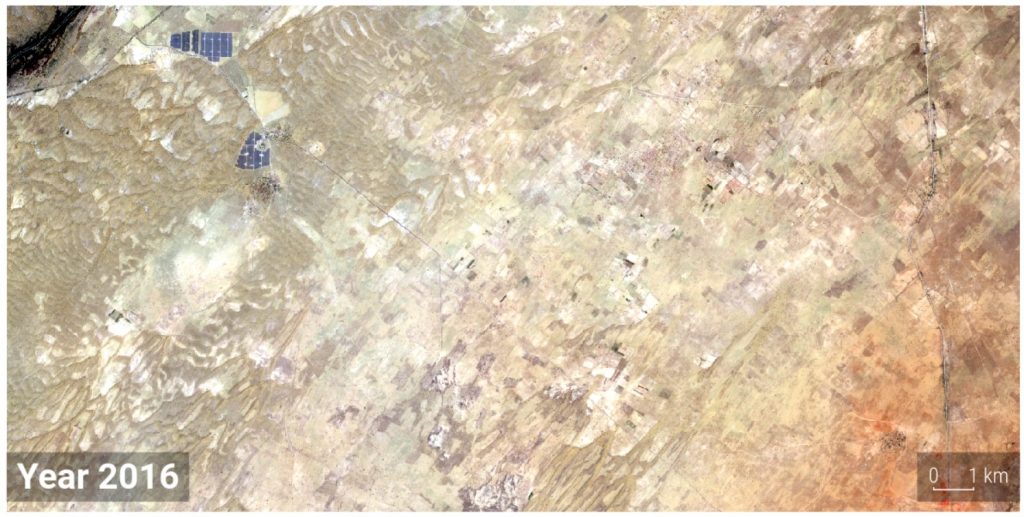
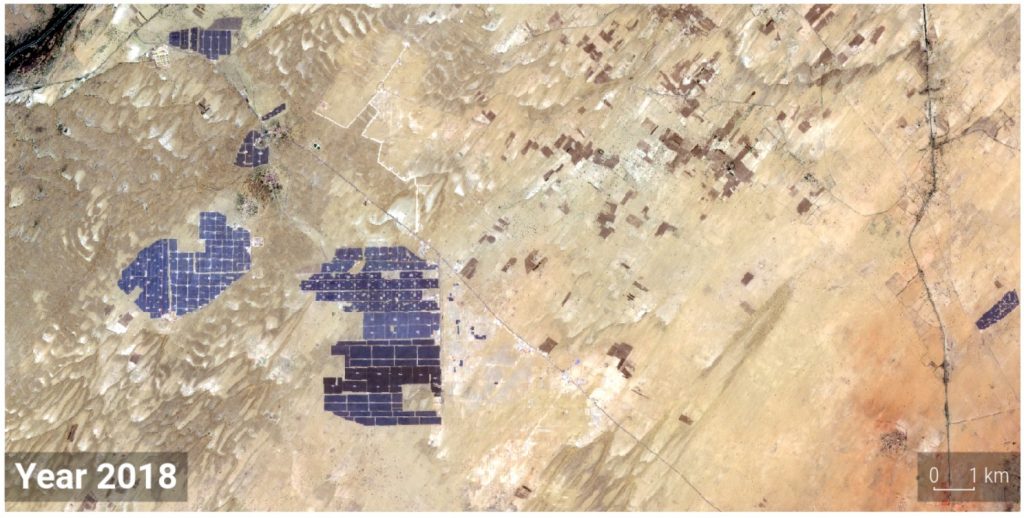
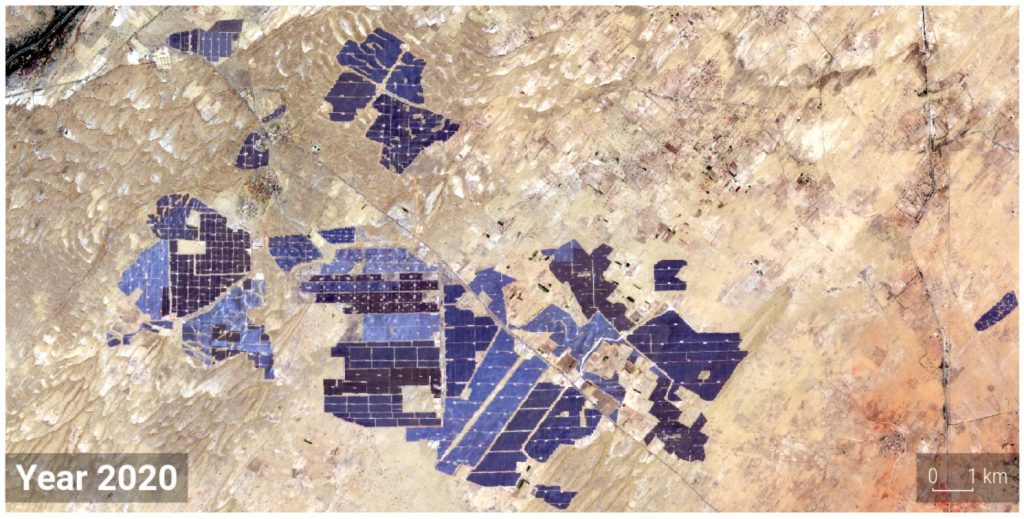
The cost of setting up a solar farm depends on the total size of the installation – how many acres does the plant span across and how many photovoltaic panels are installed.
Additional factors that affect the cost of solar farms are:
- Location
- Average peak sunlight hours
To get an in-depth answer to this question, we reached out to one of the industries leading solar installers, First Solar.
They had this to say: “the cost per watt for solar installations at this scale is somewhere around $1/watt. Therefore, you can assume that a 1 MW solar farm would cost roughly $1 million to install. If that value sounds unusually low in comparison to typical costs associated with residential solar ($2 to $4 per watt), it should. The “economies of scale” concept is in full effect with the solar industry.”
How Many Acres Do You Need For A Solar Farm?
Solar farms generally take up much more land mass than conventional power plants. With that being said, the number of acres required for a solar farm really all depends on the amount of kW or MW you would like your power plant to produce.
- Generally, you need 100 sqft for every 1kW of solar panels.
Below we have created a table outlining the number of acres needed per solar farm power output:
| Solar Farm (Power Output) | Square Feet | Square Meters | Acres | Hectares |
|---|---|---|---|---|
| 1 MW | 100,000 | 9290 | 2.5 | 1 |
| 5 MW | 500,000 | 46,451 | 11.5 | 4.6 |
| 10 MW | 1,000,000 | 92,903 | 22.7 | 9.2 |
| 50 MW | 5,000,000 | 464,515 | 114.78 | 46.44 |
| 100 MW | 10,000,000 | 929,030 | 229.56 | 92.89 |
| 200 MW | 20,000,000 | 1,858,060 | 459 | 185.75 |
| 500 MW | 50,000,000 | 4,645,152 | 1147.84 | 464.51 |
| 1000 MW | 100,000,000 | 9,290,304 | 2295.68 | 929 |
| 2000 MW | 200,000,000 | 18,580,608 | 4591.36 | 1858 |
How Much Does It Cost To Build A Solar Farm?
As with the number of acres needed, the cost of a solar farm depends on the power output of your power plant.
The larger your system, the more it is going to cost. Below we have created a table that shows you the cost breakdown per solar farm size.
| Solar Farm (Power Output) | Cost |
|---|---|
| 1 MW | $1,000,000 |
| 5 MW | $5,000,000 |
| 10 MW | $10,000,000 |
| 50 MW | $50,000,000 |
| 100 MW | $100,000,000 |
| 200 MW | $200,000,000 |
| 500 MW | $500,000,000 |
| 1000 MW | $1,000,000,000 |
| 2000 MW | $2,000,000,000 |
How Do You Clean And Maintain A Solar Farm?
Large-scale solar farms that have been in operation for many years often produce less than their maximum output due to inefficient cleaning.
Often, it is the solar facilities located closest to agricultural fields, coastal towns, airports, and bird flight paths that are affected the most over time.
If your solar farm happens to be located near any of these areas, your panels will likely need more frequent cleaning.
- Most larger solar farms utilize an automated cleaning system. This usually takes the form of automated spray systems, which look familiar to irrigation systems. These sprinkler systems are mounted on or near panels to regularly remove dirt at the touch of a button.
How Often Do Solar Farms Need To Be Cleaned?
This largely depends on the location of your solar farm. As previously mentioned, if it is located near “problem areas” you will want to clean the panels more frequently.
A general rule of thumb would be to clean your panels once every month or two, particularly if your farm is located along a bird flight path.
What Is The Best Solar Panel Cleaning Product?
For many years the industry has recommended cleaning your solar panels with plain old water. However, water alone can be an ineffective cleaning agent (depending on the circumstances).
What is the best cleaning agent that will effectively rid your solar panels of bird droppings, plant matter, dust, sand, and other contaminants?
First and foremost you need to find a cleaning agent that has:
- Low-toxicity
- Biodegradable
- Contain no VOCs
- Balanced pH levels
We recommend checking out this cleaning agent from Titan Laboratories.
Solar Farms And The Heat Island Effect
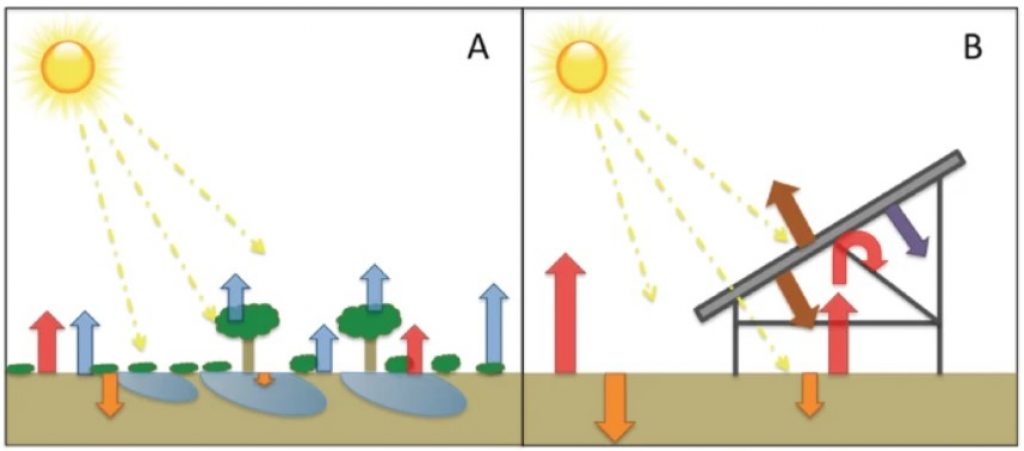
Over more recent years there have been some growing concerns on whether solar farms create a heat island effect similar to that induced by urban areas, such as cities/industrial areas.
Essentially, the concern is that large-scale PV farms may reduce the albedo in that the modified landscape becomes darker and, therefore, less reflective – resulting in the heat island effect.
If these effects were only local, there would not be much of a problem.
The issue herein lies with the sheer size of a large-scale solar farm -one spanning thousands of miles. A solar farm such as this would emit enough heat for wind currents to catch and redistribute it in a flow of heat. This could have a regional or even global effect on the climate.
What Would A PV Heat Island Effect Cause?
- A PV Heat Island Effect (PVHI effect) would result in detectable increases in sensible heat flux (atmospheric warming). In short, it would contribute to global warming.
What Is The Largest Solar Farm In The World?
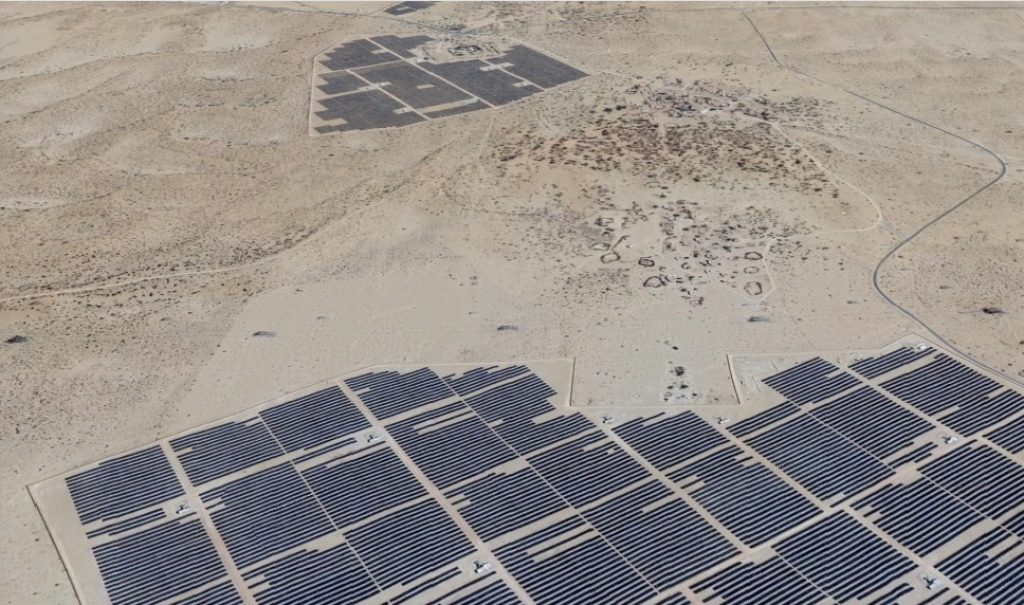
To date, the largest solar farm in the world is Bhadla Solar Park in India. The solar farm is spread over a total area of 5,700 hectares (14,000 acres) and has a total capacity of 2245 MW. The entire Bhadla Solar Farm project cost $1.4 Billion to build.
Of course, this solar farm was not built in one go but instead developed in stages over time. Below we have listed each of the developers and the total amount of capacity they contributed to the project:
| Project Developer | Capacity MW |
|---|---|
| SB Energy (Softbank) | 600 |
| Hero Future Energies | 300 |
| NTPC | 260 |
| ACME Solar | 200 |
| Azure Power | 200 |
| Charisma Energy/Sunseap | 140 |
| Engie | 140 |
| Avaada Power | 100 |
| Fortum Solar | 70 |
| Vector Green | 70 |
| ReNew Power | 60 |
| Phelan Power | 50 |
| Electrotherm | 5 |
| Aditya Biria | 20 |
| LNB Group | 5 |
| Roha Dyechem | 25 |
| Total | 2245 |
Solar Farms In The United States
The United States has a total of 26 recognized solar farms adding up to a total capacity of 10,340 MW.
Below, we have listed the name of the solar farms, the year they were built, their total capacity, and the total amount of land used:
| Name | Capacity | Land Size (Km2) | Year Built |
|---|---|---|---|
| Copper Mountain Solar Facility | 802 | 16.2 | 2016 |
| Mount Signal Solar | 794 | 15.9 | 2020 |
| Solar Star | 747 | 13 | 2015 |
| Desert Sunlight Solar Farm | 550 | 16 | 2015 |
| Topaz Solar Farm | 550 | 19 | 2014 |
| Roadrunner Solar Project | 497 | N/A | 2019 |
| Permian Energy Center | 460 | N/A | 2019 |
| Springbok Solar Farm | 443 | 5.7 | 2019 |
| Agua Caliente Solar Project | 410 | 9.7 | 2014 |
| Mesquite Solar project | 400 | 9.3 | 2016 |
| Techren Solar Project | 400 | 9.3 | 2019 |
| Prospero Solar Park | 379 | N/A | 2020 |
| Greasewood Solar Farm | 347 | N/A | 2021 |
| Taygete Solar Project | 344 | N/A | 2021 |
| Misae Solar Park | 324 | N/A | 2020 |
| Beacon Solar Project | 291 | N/A | 2017 |
| California Flats Solar Project | 280 | 11.7 | 2017 |
| Great Valley Solar | 281 | 6.5 | 2018 |
| Garland Solar Facility | 272 | 8.1 | 2016 |
| GA Solar 4 Project | 261 | 8.1 | 2019 |
| Tranquillity Solar project | 258 | 7.7 | 2016 |
| McCoy Solar Energy Project | 250 | 9.3 | 2016 |
| Silver State South Solar Project | 250 | 11.7 | 2016 |
| California Valley Solar Ranch | 250 | 7.96 | 2013 |
| Stateline Solar | 250 | 6.82 | 2016 |
| Moapa Southern Paiute | 250 | 8.1 | 2016 |
Gloabal Installed Solar Energy Capacity
Final Thoughts
According to Our World in Data, global solar production has risen from 0.17 GW in 1996 to 707.5 GW in 2020 – a +411,683% relative change.
Currently, it takes somewhere around 3 trillion watts (or 3 TW) to power the entire world.
As countries around the world become more industrialized and more people are born onto the grid, the demand for electricity is expected to increase about 80% by 2050.
In order to meet the growing electricity demands in the future, we will need to rely on all sources of renewable energy, such as wind energy, hydro energy, geothermal energy, and biomass.
We as individuals can in fact already make a difference though, by switching our homes to solar.
If you would like to figure out whether your home has solar potential, feel free to reach out to us in the comments section below or simply use our contact form to get in touch.

